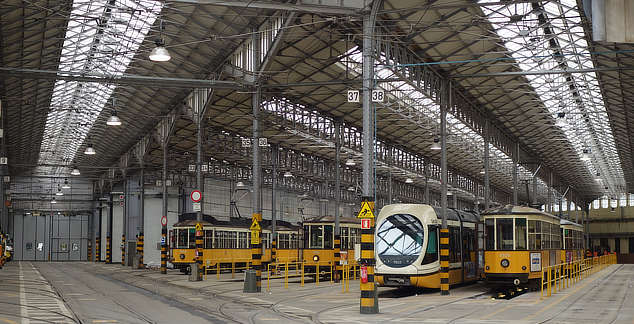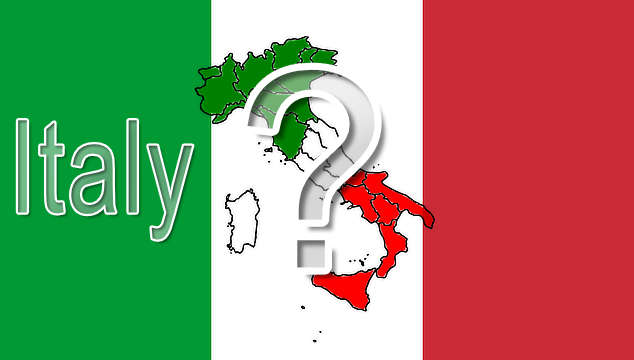In the aftermath of World War II, Italy faced the monumental task of rebuilding the nation devastated by the conflict. The process of reconstruction involved not only physical and economic recovery but also significant social and political transformations. This article explores the key aspects of post-war Italy, focusing on the reconstruction efforts, the role of the Marshall Plan, and the country’s transformation into a republic.
The reconstruction phase in post-war Italy encompassed massive economic challenges and the rebuilding of infrastructure that had been severely damaged during the war. The country had to address the scarcity of resources, housing shortages, and the need to restore industries and transportation networks. Simultaneously, social and political changes were taking place, as the war had exposed the weaknesses of the previous regime and facilitated shifts in public sentiment.
Underpinning Italy’s reconstruction was the implementation of the Marshall Plan, a generous aid package provided by the United States to support the recovery of war-torn European countries. The Marshall Plan aimed to foster economic stability, combat the threat of communism, and promote peaceful international relations. Italy became a significant recipient of Marshall Plan funds, which played a crucial role in revitalizing the economy and modernizing industries.
In parallel, Italy underwent a profound transformation from a monarchy to a republic. The monarchy, which had been associated with the fascist regime of Benito Mussolini, faced growing discontent and criticism. Eventually, a referendum was held in 1946 to decide the fate of the monarchy, resulting in the establishment of the Italian Republic. The birth of the republic brought about a new era of democratic governance and marked a significant departure from Italy’s troubled past.
The transition to a republic through the constitutional referendum of 1946 had a lasting impact on post-war Italy. It represented a shift towards democratic principles, emphasizing the importance of popular sovereignty and individual rights. The republic provided a foundation for political stability and allowed Italy to focus on rebuilding its economy, strengthening its institutions, and pursuing social progress.
Reconstruction in Post-War Italy
After the devastation of war, Italy embarked on a remarkable journey of reconstruction. In this section, we’ll dive into the economic, social, and political aspects of post-war Italy. Discover the challenges faced in rebuilding the infrastructure, and witness the transformative changes that took place at both societal and political levels. From the pursuit of economic stability to the reshaping of a new republic, the story of post-war Italy is one of resilience and transformation.
Economic Challenges and Infrastructure Rebuilding
After the devastation of World War II, Italy faced significant economic challenges and embarked on infrastructure rebuilding. The war had left the country with severe damage to its cities, industries, and transportation networks, posing obstacles that had to be overcome in order to revive the Italian economy and improve the standard of living for its citizens.
One of the major economic challenges Italy faced was the shortage of resources and materials, hindering the rebuilding of infrastructure and meeting the basic needs of the population. The war had depleted Italy’s reserves and affected its ability to import essential goods, exacerbating this scarcity.
The destruction of factories and industrial facilities meant that Italy had to rebuild its manufacturing sector from scratch, further intensifying the economic challenges. This required significant investments in new equipment and technology, as well as the training of a skilled workforce.
In addition to these economic challenges, there was also a pressing need to modernize Italy’s infrastructure, which had been severely damaged during the war. This included repairing roads, bridges, railways, and ports, while also developing new and more efficient systems to support economic growth.
To address these economic challenges and facilitate infrastructure rebuilding, Italy received crucial assistance from the Marshall Plan. This plan, funded by the United States, provided financial aid to European countries to support their reconstruction efforts. The funds received from the Marshall Plan played a vital role in revitalizing Italy’s economy and rebuilding its infrastructure.
Pro-tip: Italy’s economic challenges after World War II were met head-on through initiatives like the Marshall Plan, which played a crucial role in overcoming these obstacles. By investing in the modernization and development of infrastructure, Italy was able to jumpstart its economy and lay the foundation for future growth.
Social and Political Changes
During the post-war period, Italy underwent significant social and political changes. These transformative shifts were driven by the urgent need to rebuild and reshape the country after the devastation of World War II. Here are some key aspects to consider:
1. Political restructuring: Italy underwent a remarkable political restructuring during this period, transitioning from a monarchy to a republic. The monarchy’s role diminished, making way for the birth of the Italian Republic. This transformation was solidified through the constitutional referendum of 1946, where the majority of Italians voted in favor of a republic.
2. Rise of political parties: The post-war era witnessed the emergence of new political parties, reflecting the changing social and ideological landscape. Prominent parties like the Christian Democracy and the Italian Communist Party gained influence and played pivotal roles in shaping the political scenario.
3. Labor and social reforms: Italy experienced significant labor and social reforms during the reconstruction phase. These reforms recognized and protected workers’ rights, introducing measures such as paid holidays and social security. The aim was to improve the living and working conditions of the Italian population.
4. Economic recovery and development: Italy’s economic recovery was greatly supported by the Marshall Plan, an aid program initiated by the United States. The influx of financial assistance and resources enabled Italy to rebuild its infrastructure and drive industrialization. Consequently, the country witnessed rapid economic growth and development during this period.
5. Democratization and civic participation: The post-war years emphasized democracy and civic participation. Italians actively engaged in political processes, with increased voter turnout and participation in political organizations. This democratization process instilled a sense of empowerment and civic responsibility among the population.
The social and political changes in post-war Italy played a crucial role in reshaping the country and establishing a strong foundation for its future growth and development. These changes were pivotal in molding Italy into the modern democratic republic it is today.
The Marshall Plan
Italy’s post-war transformation into a thriving republic was greatly influenced by the Marshall Plan. In this section, we’ll take a closer look at the Marshall Plan’s purpose, goals, and how it was implemented in Italy. Get ready to explore how this ambitious recovery program played a pivotal role in shaping Italy’s economic and political landscape during this crucial period of reconstruction.
The Purpose and Goals of the Marshall Plan
plaintext
The Purpose and Goals of the Marshall Plan were clear and focused when it was put into action in Italy after World War II. The main objective of the Marshall Plan was to provide assistance to European countries, including Italy, in their efforts to rebuild their economies and infrastructure that had been severely damaged by the war. The plan aimed to achieve economic stability, revive industries, and enhance the living conditions of the people.
One of the primary purposes of the Marshall Plan in Italy was to offer financial and technical aid to support the country’s economic recovery. The plan allocated funds to help Italy reconstruct its factories, repair infrastructure, and modernize its industries. By doing so, it aimed to stimulate economic growth and generate employment opportunities.
Another significant goal was to improve the social and political situation in Italy. The Marshall Plan aimed to promote democratic values and institutions to ensure stability and prevent the emergence of extremist ideologies. It supported the implementation of social welfare programs, such as healthcare and education, to enhance the well-being of the Italian people and foster social cohesion.
The Marshall Plan also aimed to strengthen bonds and encourage cooperation among European nations. By providing aid to Italy and other countries, it aimed to promote economic integration and establish a foundation for a peaceful and prosperous post-war Europe.
The purpose and goals of the Marshall Plan were deeply rooted in the belief that a stable and prosperous Europe would contribute to global peace and security. Italy greatly benefited from the financial and technical assistance provided by the Marshall Plan, which played a crucial role in its post-war reconstruction and successful transition into a republic.
Implementation of the Marshall Plan in Italy
The implementation of the Marshall Plan in Italy was crucial in the country’s post-war reconstruction and economic recovery. Here are some key points regarding the implementation:
- Financial assistance: The Marshall Plan played a significant role in providing substantial financial aid to Italy, totaling about 1.5 billion dollars, which accounted for approximately 6% of Italy’s GDP at the time. This financial support was pivotal in helping the country rebuild its infrastructure and stimulate economic growth.
- Infrastructure projects: Italy embarked on various infrastructure projects as part of the implementation of the Marshall Plan. These projects focused on constructing and improving roads, railways, and ports to enhance transportation and trade networks, which were essential for Italy’s economic revitalization.
- Industrial development: The implementation of the Marshall Plan also prioritized the revival of Italy’s industrial sector. It allocated funds for the modernization and expansion of factories, provided assistance to small businesses, and supported the development of key industries such as steel and coal.
- Agricultural reforms: Italy benefited from agricultural reforms facilitated by the Marshall Plan. The objective was to enhance productivity and improve food security. Assistance was provided for the mechanization of agriculture, development of irrigation systems, and establishment of agricultural cooperatives.
- Trade benefits: The implementation of the Marshall Plan played a significant role in helping Italy regain access to international markets and facilitating foreign trade. This was achieved through the removal of trade barriers, promotion of exports, and support in developing trade relationships with other countries.
- Technological advancements: The Marshall Plan introduced new technologies and techniques to Italy, contributing to the modernization of various sectors. This involved providing technical expertise, training programs, and knowledge transfer, thereby boosting the competitiveness of Italian industries.
- Social benefits: The implementation of the Marshall Plan also had positive social impacts in Italy. It improved living conditions for Italians through the construction of housing projects, provision of healthcare services, and promotion of education and cultural exchange programs.
The implementation of the Marshall Plan in Italy was a transformative process that significantly contributed to the country’s recovery and paved the way for its economic prosperity in the post-war era.
Transformation into a Republic

Stop reading, start speaking
Stop translating in your head and start speaking Italian for real with the only audio course that prompt you to speak.
Italy’s journey towards becoming a republic after the devastation of World War II was a turning point in its history. In this section, we’ll delve into the transformation into a republic, exploring the role of the monarchy, the birth of the Italian Republic, the consequential constitutional referendum of 1946, and the lasting impact of the republic on post-war Italy. Get ready to uncover the fascinating events and pivotal decisions that shaped Italy’s path towards a new form of government.
The Role of the Monarchy
The Role of the Monarchy in post-war Italy was a contentious issue that played a significant role in the country’s transformation into a republic. The monarchy, represented by King Umberto II, held a primarily symbolic role in Italian society, acting as a unifying figure and symbol of national unity. Despite the limited powers granted to the monarch, King Umberto II still had some political influence, including the power to appoint and dismiss prime ministers, which allowed him to exert control over the government’s actions. However, the monarchy’s popularity began to decline as post-war Italy faced social and economic challenges, with some viewing it as a relic of the old regime and an obstacle to progress.
In 1946, a constitutional referendum was held to determine whether to retain the monarchy or establish a republic. The majority of Italians voted to abolish the monarchy and establish a republic, leading to a significant shift in Italy’s political structure and governance. The President of the Republic replaced the role of the monarch, marking the transition to a republic.
Ultimately, the role of the monarchy in post-war Italy was diminished and replaced by the establishment of a republic. The declining popularity of the monarchy and the decision of the Italian people to embrace a new political system shaped the future of the country.
Birth of the Italian Republic
The birth of the Italian Republic was a significant moment in post-war Italy. After the fall of Mussolini’s fascist regime in World War II, Italy underwent a period of transition, ultimately leading to the establishment of a new form of government.
Following the end of the war, the role of the monarchy in Italy was called into question. King Umberto II was seen by many as a symbol of the old regime and its association with fascism. As a result, in a referendum held in 1946, the Italian people were given the opportunity to decide the future of their country.
In the referendum, the Italian people were asked to choose between the monarchy and the establishment of a republic. With a significant majority, 54% of the votes, the people of Italy voted in favor of the birth of the Italian Republic, marking this significant moment.
This decision had a profound impact on post-war Italy. It signified a break from the past and the old political system. The establishment of the Italian Republic laid the foundation for a new era of democracy and political stability in the country.
The birth of the Italian Republic brought about several changes in the political landscape of the country. The monarchy was abolished, and a new constitution was drafted to define the rights and responsibilities of its citizens. The birth of the Italian Republic paved the way for Italy to rebuild and recover from the devastation of the war, setting the stage for its economic and social development in the years to come.
The birth of the Italian Republic was a pivotal moment in the history of post-war Italy, representing a fresh start and a new chapter for the nation. It marked the beginning of a democratic and prosperous Italy that would go on to play a significant role in the European and global stage.
The Constitutional Referendum of 1946
Marked a significant turning point in the history of post-war Italy.
During this referendum, the Italian population was asked to vote on the form of government they wanted for their country. The choice was between the continuation of the monarchy or the establishment of a republic.
The referendum took place on June 2, 1946, and resulted in a clear victory for the republicans. Approximately 12.7 million Italians voted for a republic, while around 10.7 million voted to retain the monarchy. This meant that Italy would no longer have a king and would become a republic.
The decision to establish a republic had far-reaching consequences for post-war Italy. It represented a break from the past and a rejection of the monarchy, which was seen by many as having failed to protect the country from fascism.
The establishment of a republic also paved the way for important political and social changes. It allowed for the drafting of a new constitution, which guaranteed civil liberties, social welfare, and the separation of powers. The new constitution was approved in 1947 and provided a sturdy foundation for democratic governance in Italy.
The Constitutional Referendum of 1946 was a pivotal moment in post-war Italy. It reflected the desire of the Italian population for a new form of government and set the stage for the transformation of Italy into a republic.
Impact of the Republic on Post-War Italy
The impact of the Republic on Post-War Italy was significant, as it brought about positive changes and challenges. This impact can be seen in various aspects of Italian society.
Firstly, the establishment of the Italian Republic in 1946 provided a stable political system and promoted democratic values. This had a profound effect on restoring faith in the government and creating a sense of unity among the Italian people.
Secondly, under the Republic, Italy experienced a period of economic growth and reconstruction. With the support of funds from the Marshall Plan, the government invested in infrastructure projects, such as road and railway construction. These endeavors not only boosted the economy but also created job opportunities for the Italian population.
Furthermore, the Republic introduced social reforms aimed at improving the welfare of its citizens. These reforms included the establishment of a public healthcare system and the implementation of labor laws to protect workers’ rights. These changes had a positive impact on the well-being and quality of life for Italians.
The Republic also played a significant role in nurturing the cultural and artistic development of Italy. It supported the promotion of Italian art, literature, and cinema, which enhanced the country’s cultural reputation worldwide.
However, it is important to note that the impact of the Republic was not uniform across all regions of Italy. Some areas, especially in the South, continued to face economic challenges and high poverty rates. While efforts were made by the Republic to address these regional disparities, success varied.
Overall, the Republic had a profound and lasting impact on Post-War Italy. It fostered political stability, promoted economic growth, implemented social reforms, and nurtured cultural achievements. However, regional disparities continue to be a concern for the country. Through its efforts, the Republic shaped the future of Italy and laid the foundation for its development as a modern nation.
Frequently Asked Questions
1. What was the purpose of the Marshall Plan?
The Marshall Plan, also known as the European Recovery Program, aimed to provide aid to Western Europe after World War II. It was enacted in 1948 with the intention of rebuilding cities, industries, and infrastructure that were heavily damaged during the war. The plan also aimed to remove trade barriers between European countries and foster commerce between them and the United States.
2. How much financial aid was given through the Marshall Plan?
The Marshall Plan provided over $15 billion in aid to Western Europe after World War II. This amount of aid was significant, as it accounted for about 5 percent of the United States’ gross domestic product at the time. The aid was distributed to 16 European nations, with larger amounts given to major industrial powers like Germany, France, and Britain.
3. What were the conditions in Europe after World War II?
Europe after World War II was in dire straits. Many cities, including London, Berlin, and Hamburg, were either partially or completely destroyed. Millions of people had been killed or wounded, and agricultural and food production had been disrupted, leading to the threat of famine. Transportation infrastructure, such as railways and ports, had suffered extensive damage.
4. Who formulated the reconstruction efforts under the Marshall Plan?
The reconstruction efforts under the Marshall Plan were formulated after a meeting of European states in 1947. The plan was created by U.S. Secretary of State George C. Marshall. While the Soviet Union and its satellite states were invited to participate, they declined due to their concerns about U.S. involvement in their national affairs.
5. Did all participating nations receive equal assistance through the Marshall Plan?
No, not all participating nations received equal assistance through the Marshall Plan. Italy and neutral countries like Switzerland received less aid per capita compared to countries that fought alongside the United States. Great Britain received about one-quarter of the total aid, while France received less than one-fifth. The reconstruction of West Germany was seen as essential for economic stability in the region and as a counter to the communist government in East Germany.
6. What impact did the Marshall Plan have on Europe?
The Marshall Plan not only played a crucial role in the economic redevelopment of Europe but also aimed to stop the spread of communism in the continent. Its implementation marked the beginning of the Cold War between the United States, its European allies, and the Soviet Union. Additionally, the plan played a part in the formation of the North Atlantic alliance.






